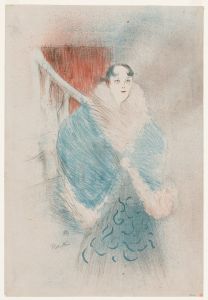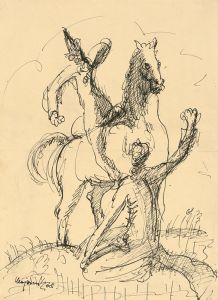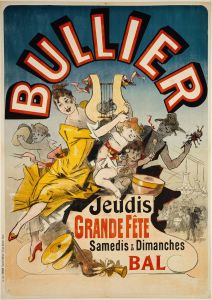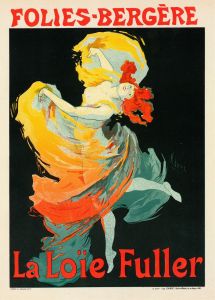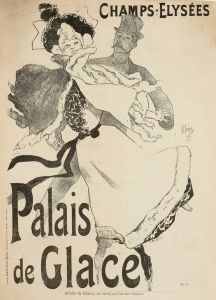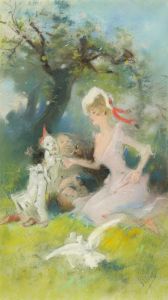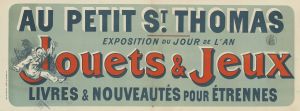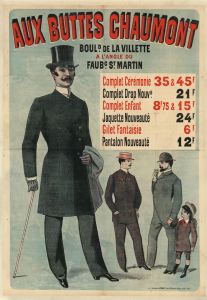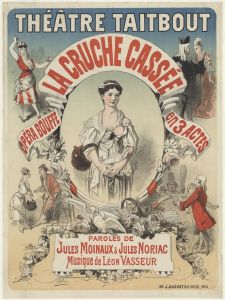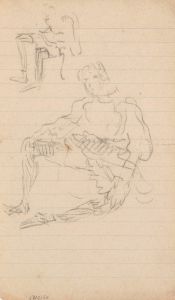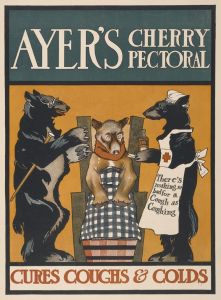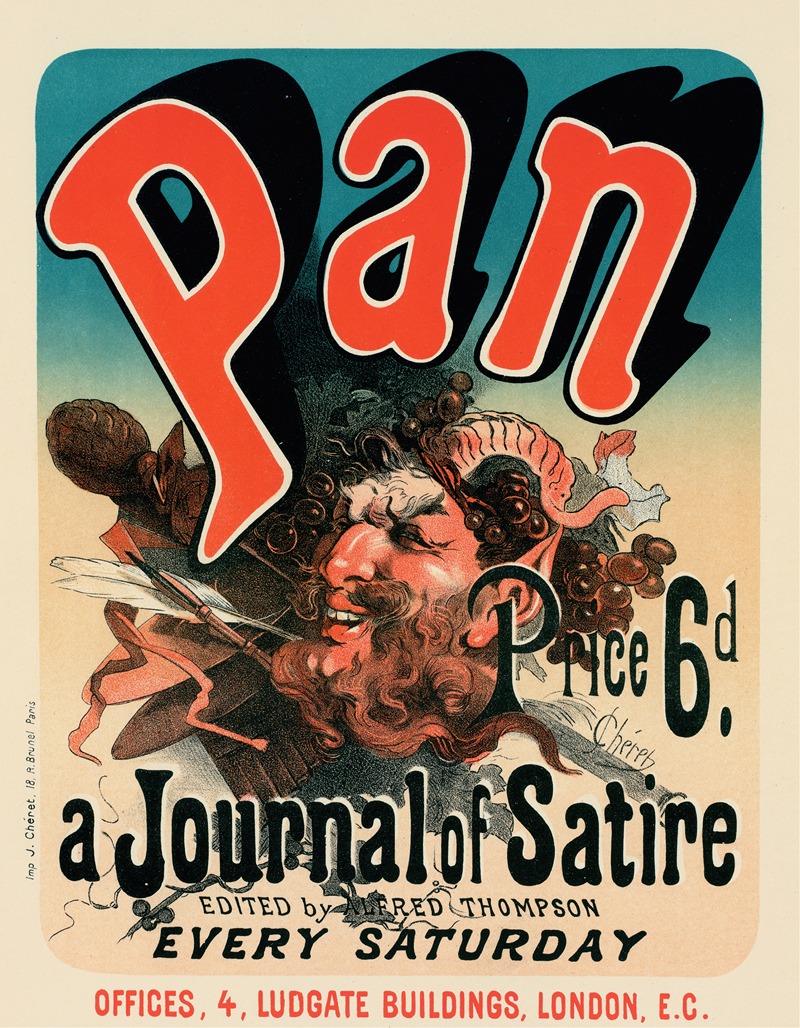
Pan
A hand-painted replica of Jules Chéret’s masterpiece Pan, meticulously crafted by professional artists to capture the true essence of the original. Each piece is created with museum-quality canvas and rare mineral pigments, carefully painted by experienced artists with delicate brushstrokes and rich, layered colors to perfectly recreate the texture of the original artwork. Unlike machine-printed reproductions, this hand-painted version brings the painting to life, infused with the artist’s emotions and skill in every stroke. Whether for personal collection or home decoration, it instantly elevates the artistic atmosphere of any space.
Jules Chéret, a pivotal figure in the development of poster art, is renowned for his vibrant and innovative designs that helped shape the visual culture of the late 19th and early 20th centuries. One of his notable works is "Pan," a piece that exemplifies his mastery in combining art and advertising.
Jules Chéret was born in Paris in 1836 and is often referred to as the "father of the modern poster." His career began in the mid-19th century, a time when lithography was becoming a popular medium for mass communication. Chéret's work was instrumental in transforming the poster from a purely informational tool into a form of art. His posters were characterized by their bright colors, dynamic compositions, and the depiction of lively, joyous figures, often women, which became known as "Chérettes."
"Pan" by Jules Chéret is a lithographic poster created in 1894. It was designed to promote the French literary and artistic magazine "Pan," which was published in Paris. The magazine was known for its avant-garde content, featuring works by contemporary writers and artists. Chéret's poster for "Pan" captures the spirit of the magazine with its bold and colorful design.
The poster features the mythological figure Pan, the Greek god of the wild, shepherds, and flocks, often associated with rustic music and depicted with the hindquarters, legs, and horns of a goat. In Chéret's depiction, Pan is portrayed in a lively and whimsical manner, playing his signature pan flute. The use of vibrant colors and fluid lines is typical of Chéret's style, creating a sense of movement and energy that draws the viewer's attention.
Chéret's work on "Pan" is a testament to his ability to blend artistic creativity with commercial appeal. His posters were not only advertisements but also works of art that captured the imagination of the public. This approach helped elevate the status of the poster as a legitimate art form and influenced a generation of artists, including those involved in the Art Nouveau movement.
The impact of Chéret's work extends beyond his artistic contributions. He played a significant role in the democratization of art, making it accessible to the general public through his posters, which were displayed in public spaces throughout Paris. His innovative use of color and design set a new standard for commercial art and paved the way for future developments in graphic design.
In summary, "Pan" by Jules Chéret is a significant work that reflects the artist's pioneering approach to poster design. Through his vibrant and engaging style, Chéret not only promoted the magazine "Pan" but also contributed to the broader cultural and artistic movements of his time. His legacy continues to influence the fields of advertising and graphic design today.






